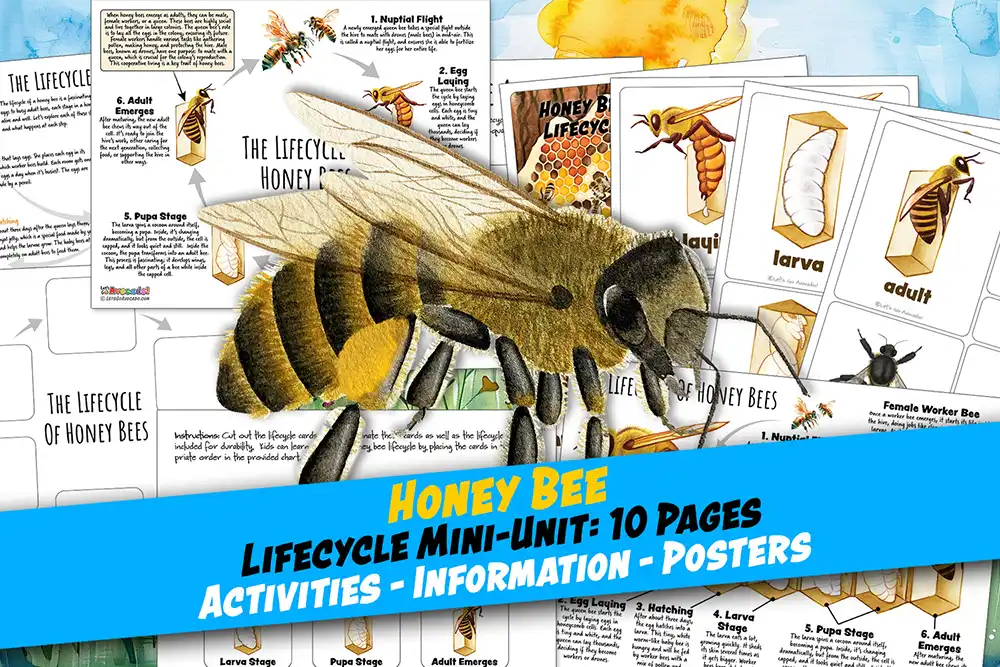

Honey Bee
Western honey bee, European honey bee
Apis mellifera
This page may contain affiliate links.
Read our disclosure and privacy policy here.
Honey bees are fascinating insects that are loved by people all over the world. These small but mighty creatures play a vital role in our environment and are known for their ability to produce sweet, delicious honey. Honey bees belong to the genus Apis and are typically golden-yellow with brown bands. They live in large colonies and are known for their teamwork and dedication. You can find honey bees in many parts of the world, and they are especially important for agriculture.
One of the most amazing things about honey bees is their complex social structure. They live in colonies made up of thousands of bees, each with a specific job to do. The queen bee is the leader, laying eggs to keep the colony going, while worker bees handle tasks like gathering food and protecting the hive. Honey bees are also known for their incredible communication skills. They use special dances to tell each other where to find food. In addition, honey bees are key pollinators, helping plants produce fruits and seeds.
Honey Bee

There’s a lot to explore right where we are, in our own neighborhoods and backyards! Join us while we get off the couch and explore the everyday wonders of nature, science, space, engineering, art, and anything else we stumble upon during on our adventures.








